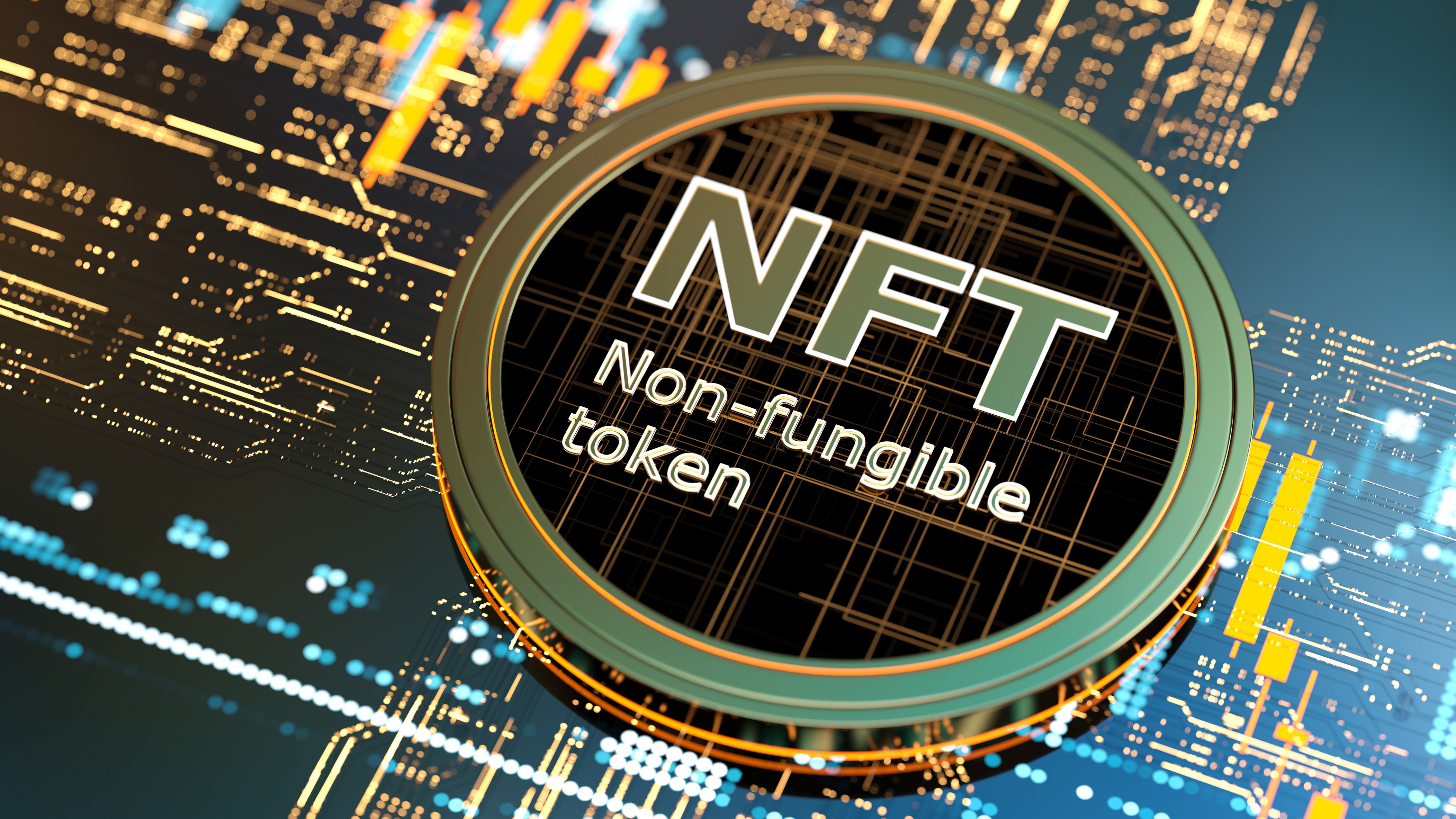NFTs Explained - Part 3
The Future of NFTs
So what really is the future of NFTs, is it just hype, or is there real long-term potential. Despite outperforming everyone’s expectations for the market in 2021, it is still unclear where the market could be heading in the future.
Critics of the future of NFT have asked tough questions regarding the sustainability of the current craze in the NFT market. Many of these critics are genuine crypto enthusiasts but just can’t see the sustainability of this craze as we head into the future. On the other hand, many speak confidently of NFTs, holding to the potential this latest blockchain tool has for further future applications.
So, with the stellar performance this year of NFT so far, where does the NFT market head in the coming months and years?
What's the Future of NFTs in Art & Music?
The NFT train is sweeping through the art and music industry at rapid pace whilst disrupting traditional operations. The digital takeover, predominantly in the music industry, has seen listeners opt for online streaming services instead of CDs or digital downloads, cutting profits significantly for many artists. To make matters worse, the COVID-19 pandemic has had a huge impact on the music industry as a whole with canceled tours, limiting their revenue sources even further.
With no real return to live music, the music industry faces an uncertain future. NFTs now allow artists to open the door to a new revenue stream that has huge potential. It offers the chance for these artists to bypass the swathe of record labels, distribution, and publishing rights. This way they are able to cut down on expenses and sell directly to their own fan base.
As a result of the NFT craze that started in late 2020, many digital artists and musicians were quick to tokenize their creations and sell them as NFTs. This proved to be lucrative for many artists who sold big. EDM star Justin Blau, aka 3LAU, tokenized his album Ultraviolet and sold its 33 NFTs for over $11.6 million. Canadian singer Grimes also sold digital artwork NFTs for $6 million. Some bands, producers, and artists have also sold big as the NFT market dramatically rose.
Given the value of an NFT is dependent on the demand, artists with big followings stand the chance for bigger returns. Famous stars with big fan bases across the globe are now looking at NFTs as a way to make large sums of money fast. Smaller artists also have the potential to make money through NFT sales but the determining factor will be the loyalty of their fanbase and interest in the tokens that are available.
Tokenizing Artwork and Music Copyrights
Beyond the craze in sales, NFTs’ underlying technology has the potential to rethink the sale of digital artwork or music. One key area of application for this technology is tokenizing copyrights. The fast-expanding NFT ecosystem has top projects that allow users to tokenize their work. Some of these include Bluebox, Audius, and ROCKI.
In cases where revenues from music streaming platforms remain low, more artists will opt to sell partial or full rights to their music as NFTs. With no signs of budging from these streaming platforms, NFT popularity is expected to rise in the future.
For digital artists, the internet has significantly demonetized their works as many users can access and use their artwork for free. Dedicated NFT marketplaces like SuperRare help individual artists to tokenize their rare artworks and put them up for sale. Unlike the highly centralized stock image websites, NFT marketplaces for digital art impose very low fees on digital artists for successful sales. With low cost and more revenue for artists, NFTs will change how we interact with the artwork.
What Could Happen Next With NFTs?
From February 2021, the average price of NFTs has slumped by 70%. Unlike the sharp drop by cryptocurrencies in mid-May, the NFT market has dropped gradually. This performance signals that the market is correcting. As the initial hype dies down, new and solid NFT projects will trigger a stable rise in the overall value of the NFT market. Here is what could happen next with NFTs:
More Development
The ecosystem, including NFT studios, marketplaces, domains, metaverse, infrastructure, and collectibles, is developing fast. Apart from Ethereum, other blockchains have started developing and releasing token standards for NFTs, expanding the NFT market reach to more developers and users.
Potential Counterfeiting
Keen on the arts and music industry, NFT marketplaces have a critical task to ensure counterfeit creations are removed from their platforms. Otherwise, the currently prevalent vice will wash down creators’ trust in NFTs.
New Business Models
In addition to art and music, industries such as sports that involve large fan bases can benefit from a new business model with NFTs to earn additional revenue.
More sports teams are likely to issue limited tokens for sale or to reward fans. Considering that at least 50% of sports memorabilia is fake, NFTs will help fans authenticate the memorabilia before purchasing. In the future, teams may even apply NFTs in player transfer to simplify tracking and enforcing the transfer.
Change in Ownership
Transactions that involve the transfer of ownership are often bugged by intermediaries who take a percentage of the proceeds. This transfer process is not always securely verified, so has the potential to cause complications with the change in ownership between two or more parties.
In the future, NFTs will be deployed to such applications to ease transfers and asset authentication. This will be the case not only for digital assets but physical assets too such as land, property, and cars.
How Will The Internet Need to Change?
The third generation of the internet (Web 3.0) will have websites and apps processing information just like human-intelligence. This third generation of the internet is now gearing up for NFTs to play an integral part in the future. As such, the internet will need to change to adapt in the future.
The Internet, as we know it today, has dramatically improved processes involving information access through digitization. However, It's fair to say that the internet as it stands today hasn't done much in relation to digital security and will require changes. The change in the internet to Web 3.0 will open the door to high levels of digital security that we have not previously seen before and NFTs will play an integral part. NFTs will pave the way for new business model opportunities for a wide variety of industries, with Web 3.0 at the core success of NFTs in the future.
At the moment many creators decry the internet of exposing creators to fraudulent activities by con artists. The internet of the future will have to be verifiable, so it can aggregate through big data sets to ensure creators are protected against counterfeits. The internet will need to shift to more decentralized domains that are proofed against censorship. This will secure vital blockchain infrastructure against control or regulation by centralized institutions and governments.
What Applications Will Follow, How Will They Work?
There is huge potential for many other applications to follow given the NFT ecosystem is already set up. Many more applications will join the space over the next couple of years, with the NFT space rapidly developing, expanding access to more NFT tools for small and established creators.
Some of the most advanced NFT applications today are in collectibles. Here are some uncommon applications that are expected to appear in the NFT space soon:
Asset Representation
Despite the rapid growth in popularity of NFTs, there has been very little progress in applying NFTs to tokenize physical assets.
It is expected that this application is likely to be taken up in the near future. NFTs can then be used to represent ownership of any item, from the property, physical artwork, a rare gem, limited edition snickers, or anything considered valuable.
Asset Authentication
Verifying the authenticity of physical items is complex. But, with the underlying token standards in NFTs, tokenized assets can easily be tracked to verify their originality, without the hassle of seeking expert services from intermediaries.
Ownership Proof
NFTs are digitally native, not subject to wear and tear but with physical receipts, car ownership certificates, or other physical proofs of ownership can be lost or damaged.
In this case, NFTs in the future will be applied to digitize certificates and other forms that prove the ownership of assets. Due to their nature, NFTs cannot be damaged or lost as they are secured in their blockchains. Even if your physical item represented by the NFT is lost, it cannot be transferred to another person since you still hold the digital proof of ownership in your NFT wallet.
NFTs create a huge revenue potential for creators. However, these creators should be careful to examine the most effective ways to make their projects successful. Apart from creators, NFTs are opening up to other applications, mainly tokenizing physical assets, with these tokens expected to stay as NFT popularity continues to grow over the coming years.









